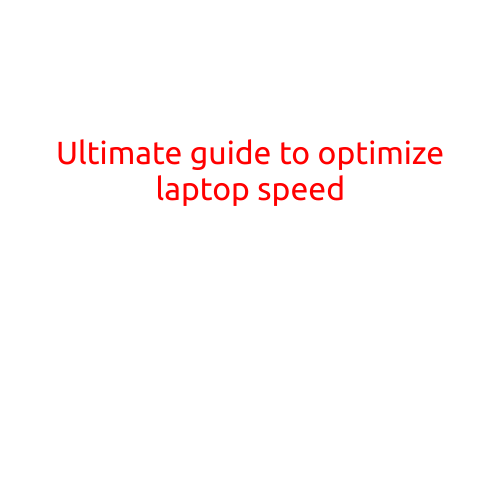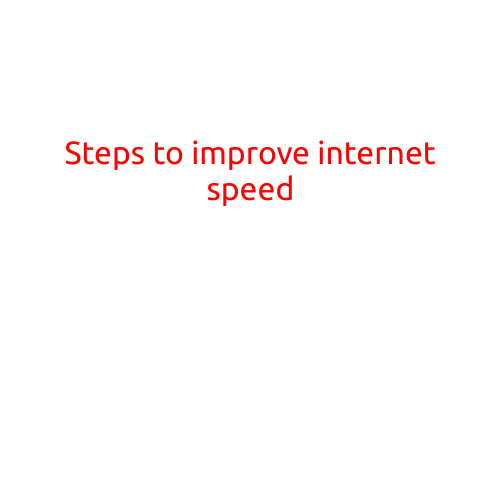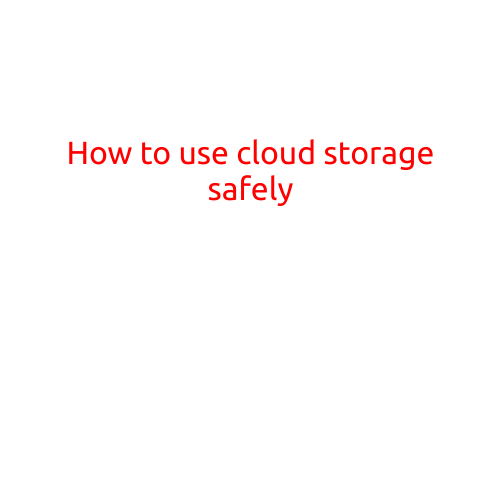
Ultimate Guide to Optimize Laptop Speed
Are you tired of dealing with a slow and sluggish laptop? Are you frustrated with the constant wait times and freezes that make it difficult to get work done? Optimizing your laptop’s speed can be a game-changer, allowing you to work more efficiently and effectively. In this ultimate guide, we’ll walk you through the top tips and tricks to help you optimize your laptop’s speed and keep it running like new.
Tip #1: Update Your Operating System
Outdated operating systems can cause slow performance, as older versions may not be optimized for newer hardware. Make sure to keep your operating system up-to-date by checking for updates regularly. This will ensure that you have the latest security patches, bug fixes, and performance enhancements.
Tip #2: Close Unnecessary Programs
Many laptops come installed with a plethora of programs and apps that can slow down performance. Close any unnecessary programs you’re not using, as they can consume system resources and slow down your laptop. Use the Task Manager (Windows) or Activity Monitor (Mac) to identify and close any unnecessary programs.
Tip #3: Disable Animations and Effects
To improve performance, consider disabling animations and effects in your operating system. These can consume system resources and cause lag. To disable animations in Windows, go to the Ease of Access center, then click on “Make things easier to see.” In macOS, go to System Preferences, then click on “Accessibility,” and toggle off “Reduce motion.”
Tip #4: Clear Cache and Cookies
Clearing your browser cache and cookies can help improve performance by removing unnecessary data. Use the following keyboard shortcuts to clear your cache:
- Chrome: Ctrl + Shift + Delete (Windows) or Command + Shift + Delete (Mac)
- Firefox: Ctrl + Shift + Delete (Windows) or Command + Shift + Delete (Mac)
- Safari: Command + Shift + Delete (Mac)
Tip #5: Disable Startup Programs
Many programs automatically start when you boot up your laptop, consuming system resources and slowing down performance. Disable any unnecessary startup programs by going to your Start menu (Windows) or System Preferences (Mac).
Tip #6: Upgrade Your RAM
Adding more RAM to your laptop can significantly improve performance, especially if you’re running multiple applications at once. Check your laptop’s specifications to see if you can upgrade your RAM and take advantage of the extra memory.
Tip #7: Run Disk Cleanup
Over time, your laptop’s hard drive can become cluttered with temporary files, system logs, and other data. Run a disk cleanup to remove any unnecessary files and free up storage space. In Windows, go to the Start menu, then click on “Settings.” In macOS, go to the Applications folder, then click on “Utilities,” and run “Disk Cleanup.”
Tip #8: Defragment Your Hard Drive
If you’re using a traditional hard drive, defragmenting can help improve performance by reorganizing files and reducing fragmentation. In Windows, go to the Start menu, then click on “Settings.” In macOS, go to the Applications folder, then click on “Utilities,” and run “Disk Utility.”
Tip #9: Disable Overheating Protection
Some laptops have a built-in protection that slows down performance when they reach a certain temperature. Disable this feature if possible, as it can slow down your laptop. Check your laptop’s specifications to see if this feature is available.
Tip #10: Consider Upgrading to an SSD
Solid-State Drives (SSDs) are much faster than traditional hard drives, making them ideal for laptops that need to run multiple applications at once. If your laptop is several years old, consider upgrading to an SSD for improved performance.
By following these simple tips, you can optimize your laptop’s speed and get back to working efficiently. Remember to regularly update your operating system, close unnecessary programs, and clear cache and cookies to keep your laptop running like new.





